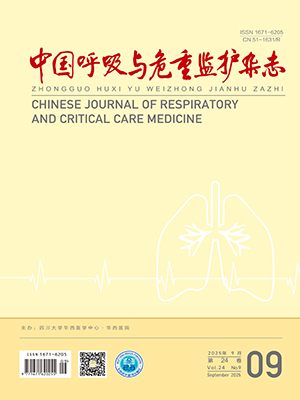| 1. |
Robert C. A decade of immune-checkpoint inhibitors in cancer therapy. Nat Commun, 2020, 11(1): 3801.
|
| 2. |
Khorana AA, Dalal M, Lin J, et al. Incidence and predictors of venous thromboembolism (VTE) among ambulatory high-risk cancer patients undergoing chemotherapy in the United States. Cancer, 2013, 119(3): 648-655.
|
| 3. |
Deschênes-Simard X, Richard C, Galland L, et al. Venous thrombotic events in patients treated with immune checkpoint inhibitors for non-small cell lung cancer: a retrospective multicentric cohort study. Thromb Res, 2021, 205: 29-39.
|
| 4. |
Icht O, Darzi N, Shimony S, et al. Venous thromboembolism incidence and risk assessment in lung cancer patients treated with immune checkpoint inhibitors. J Thromb Haemost, 2021, 19(5): 1250-1258.
|
| 5. |
Khorana AA, Palaia J, Rosenblatt L, et al. Venous thromboembolism incidence and risk factors associated with immune checkpoint inhibitors among patients with advanced non-small cell lung cancer. J Immunother Cancer, 2023, 11(1): e006072.
|
| 6. |
Forgo G, Micieli E, Ageno W, et al. An update on the global use of risk assessment models and thromboprophylaxis in hospitalized patients with medical illnesses from the World Thrombosis Day steering committee: Systematic review and meta-analysis. J Thromb Haemost, 2022, 20(2): 409-421.
|
| 7. |
Bjørnhart B, Kristiansen C, Asmussen J, et al. Clinical impact of venous thromboembolism in non-small cell lung cancer patients receiving immunotherapy. Thromb Res, 2023, 221: 164-172.
|
| 8. |
Bai R, Lv Z, Xu D, et al. Predictive biomarkers for cancer immunotherapy with immune checkpoint inhibitors. Biomark Res, 2020, 8: 34.
|
| 9. |
Yu Y, Zeng D, Ou Q, et al. Association of survival and immune-related biomarkers with immunotherapy in patients with non-small cell lung cancer: a meta-analysis and individual patient-level analysis. JAMA Netw Open, 2019, 2(7): e196879.
|
| 10. |
Bodor JN, Boumber Y, Borghaei H. Biomarkers for immune checkpoint inhibition in non-small cell lung cancer (NSCLC). Cancer, 2020, 126(2): 260-270.
|
| 11. |
Roopkumar J, Swaidani S, Kim AS, et al. Increased incidence of venous thromboembolism with cancer immunotherapy. Med, 2021, 2(4): 423-434.
|
| 12. |
Söyler Y, Akın Kabalak P, Kavurgacı S, et al. Could PD-L1 positivity be associated with venous thrombosis in patients with non-small cell lung cancer? Journal of Thrombosis and Thrombolysis, 2022, 55(2): 382-391.
|
| 13. |
Caprini JA. Thrombosis risk assessment as a guide to quality patient care. Dis Mon, 2005, 51(2-3): 70-78.
|
| 14. |
Barbar S, Noventa F, Rossetto V, et al. A risk assessment model for the identification of hospitalized medical patients at risk for venous thromboembolism: the Padua Prediction Score. J Thromb Haemost, 2010, 8(11): 2450-2457.
|
| 15. |
Rami-Porta R, Nishimura KK, Giroux DJ, et al. The International Association for the Study of Lung Cancer Lung Cancer Staging Project: Proposals for Revision of the TNM Stage Groups in the Forthcoming (Ninth) Edition of the TNM Classification for Lung Cancer. J Thorac Oncol, 2024, 19(7): 1007-1027.
|
| 16. |
Berghoff AS, Kiesel B, Widhalm G, et al. Programmed death ligand 1 expression and tumor-infiltrating lymphocytes in glioblastoma. Neuro Oncol, 2015, 17(8): 1064-1075.
|
| 17. |
Remon J, Passiglia F, Ahn MJ, et al. Immune checkpoint inhibitors in thoracic malignancies: review of the existing evidence by an IASLC expert panel and recommendations. J Thorac Oncol, 2020, 15(6): 914-947.
|
| 18. |
Howlader N, Forjaz G, Mooradian MJ, et al. The effect of advances in lung-cancer treatment on population mortality. N Engl J Med, 2020, 383(7): 640-649.
|
| 19. |
Engelmann B, Massberg S. Thrombosis as an intravascular effector of innate immunity. Nat Rev Immunol, 2013, 13(1): 34-45.
|
| 20. |
Franco AT, Corken A, Ware J. Platelets at the interface of thrombosis, inflammation, and cancer. Blood, 2015, 126(5): 582-588.
|
| 21. |
Alma S, Eloi D, Léa V, et al. Incidence of venous thromboembolism and discriminating capacity of Khorana score in lung cancer patients treated with immune checkpoint inhibitors. J Thromb Thrombolysis, 2022, 54(2): 287-294.
|
| 22. |
Hill H, Robinson M, Lu L, et al. Venous thromboembolism incidence and risk factors in non-small cell lung cancer patients receiving first-line systemic therapy. Thromb Res, 2021, 208: 71-78.
|
| 23. |
Di W, Xu H, Xue T, et al. Advances in the prediction and risk assessment of lung cancer-associated venous thromboembolism. Cancer Manag Res, 2021, 13: 8317-8327.
|
| 24. |
Saghazadeh A, Hafizi S, Rezaei N. Inflammation in venous thromboembolism: cause or consequence?. Int Immunopharmacol, 2015, 28(1): 655-665.
|
| 25. |
Alsaab HO, Sau S, Alzhrani R, et al. PD-1 and PD-L1 checkpoint signaling inhibition for cancer immunotherapy: mechanism, combinations, and clinical outcome. Front Pharmacol, 2017, 8: 561.
|
| 26. |
Aguiar De Azevedo L, Orione C, Tromeur C, et al. Incidence of venous thromboembolism and association with PD-L1 expression in advanced non-small cell lung cancer patients treated with first-line chemo-immunotherapy. Front Oncol, 2024, 13: 1221106.
|
| 27. |
Xiong W, Du H, Ding W, et al. The association between pulmonary embolism and the cancer-related genomic alterations in patients with NSCLC. Respir Res, 2020, 21(1): 185.
|
| 28. |
Mulder FI, Horváth-Puhó E, van Es N, et al. Venous thromboembolism in cancer patients: a population-based cohort study. Blood, 2021, 137(14): 1959-1969.
|
| 29. |
Khan UT, Walker AJ, Baig S, et al. Venous thromboembolism and mortality in breast cancer: cohort study with systematic review and meta-analysis. BMC Cancer, 2017, 17(1): 747.
|
| 30. |
Ording AG, Christensen TD, Skjøth F, et al. Risk of venous thromboembolism in patients with stage III and IV non–small-cell lung cancer: nationwide descriptive cohort study. Clin Lung Cancer, 2024, 25(5): 407-416, e401.
|
| 31. |
Zhang J, Xie Y, Yang L, et al. Validation of risk assessment scores in predicting venous thromboembolism in patients with lung cancer receiving immune checkpoint inhibitors. BMC Pulm Med, 2024, 24(1): 507.
|




